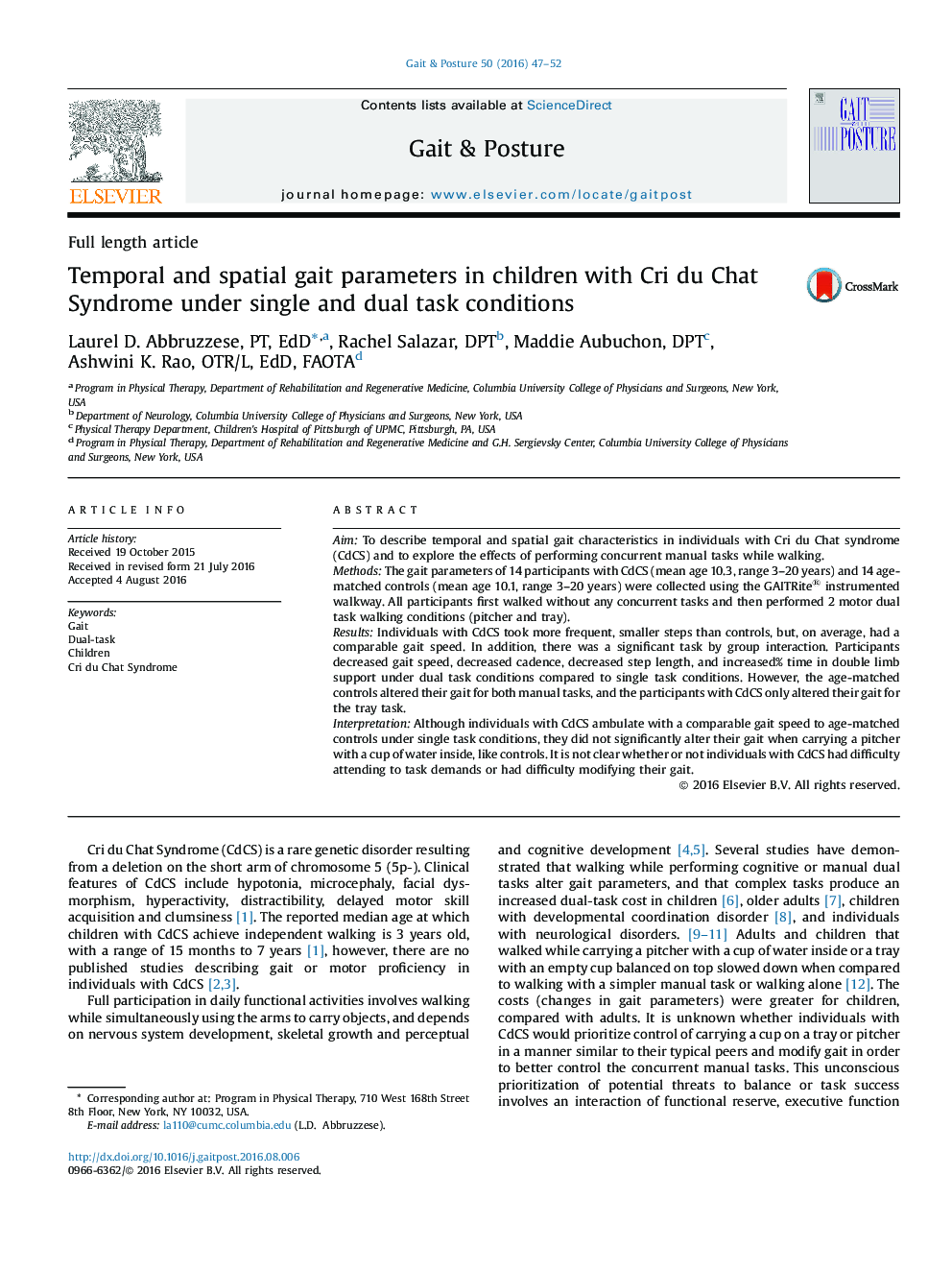| Article ID | Journal | Published Year | Pages | File Type |
|---|---|---|---|---|
| 6205296 | Gait & Posture | 2016 | 6 Pages |
â¢Individuals with CdCS walk with comparable speed but with more frequent and smaller steps than peers.â¢Individuals with CdCS spilled water when walking while carrying a pitcher and did not slow down for this dual task condition.â¢The impact of performing a manual task on gait depends on task complexity.
AimTo describe temporal and spatial gait characteristics in individuals with Cri du Chat syndrome (CdCS) and to explore the effects of performing concurrent manual tasks while walking.MethodsThe gait parameters of 14 participants with CdCS (mean age 10.3, range 3-20 years) and 14 age-matched controls (mean age 10.1, range 3-20 years) were collected using the GAITRite® instrumented walkway. All participants first walked without any concurrent tasks and then performed 2 motor dual task walking conditions (pitcher and tray).ResultsIndividuals with CdCS took more frequent, smaller steps than controls, but, on average, had a comparable gait speed. In addition, there was a significant task by group interaction. Participants decreased gait speed, decreased cadence, decreased step length, and increased% time in double limb support under dual task conditions compared to single task conditions. However, the age-matched controls altered their gait for both manual tasks, and the participants with CdCS only altered their gait for the tray task.InterpretationAlthough individuals with CdCS ambulate with a comparable gait speed to age-matched controls under single task conditions, they did not significantly alter their gait when carrying a pitcher with a cup of water inside, like controls. It is not clear whether or not individuals with CdCS had difficulty attending to task demands or had difficulty modifying their gait.
